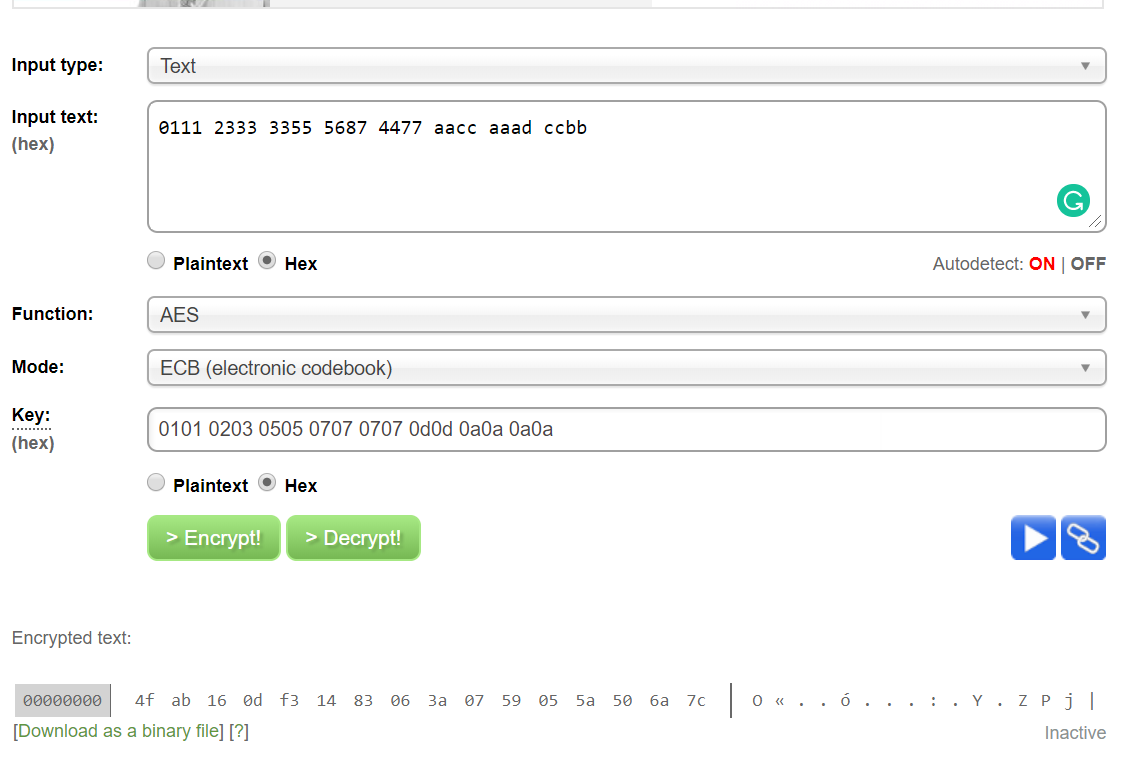The attached
Task 3:
For any AES calculator you will find online, you will need to do the calculation (for AES encryption) manually from round to round, up to at least 10 rounds. You can use any of these calculators:
http://testprotect.com/appendix/AEScalc http://extranet.cryptomathic.com/aescalc/index http://aes.online-domain-tools.com
Using this AES Calculator, encrypt the plaintext given below using the key in
128-bit (32 hex digit). To do so:
Copy the value of the plaintext and key in the AES Calculator. Click encrypt, and copy the obtained ciphertext in the space provided in the table below:
| Plaintext1 | 0111 2333 3355 5687 4477 aacc aaad ccbb |
| Key | 0101 0203 0505 0707 0707 0d0d 0a0a 0a0a |
| Ciphertext1 | 4fab160df31483063a0759055a506a7c |

Note how the value of the state (result of each round) changes round by round. Copy the ciphertext (from the AES calculator) for each round into Table 1 shown below, precisely in row CTxt1 (as shown) – where CTxt1 denotes Ciphertext1.
Consider Plaintext2 given below. Encrypt it using the same Key as in Step 2a and then copy the obtained ciphertext in the space provided in the table below. Compare the values of Plaintext1 with that of Plaintext2. Determine what that bit number is (note that bit numbers start with 1 and ends with 128 from left to right).
| Plaintext2 | 0111 1133 5555 5577 8899 aaaa addd cccc |
| Ciphertext2 | 7edbef6e5cc23adde6e2bf5b6d03fb38 |
Copy the ciphertext obtained for each round into the above-mentioned
Table 1, writing it on row CTxt2 – where CTxt2 denotes Ciphertext2
Calculate the bit difference in the ciphertext for each column. Then determine the total number of bit difference for each round. You should run up to a minimum of 5 rounds of AES. You can use Table 2 given below to find the bit difference. Note: The … means you need to expand the chart to include the missing values.
Table 1: Fill out the plaintext and ciphertext hex values (1 hex value for each column)
| Round | Text Type |
|
|
|
|
|
| Total in bit difference |
|
| PTxt1 | 0 | 1 | 1 | 1 | … | b |
|
| PTx2 | 0 | 1 | 1 | 1 | … | c | ||
| Diff |
|
| … |
| ||||
| 0 | CTxt1 |
|
| … |
|
| ||
| CTxt2 |
|
| … |
| ||||
| Diff |
|
| … |
| ||||
| 1 | CTxt1 |
|
| … |
|
| ||
| CTxt2 |
|
| … |
| ||||
| Diff |
|
| … |
| ||||
| 2 | CTxt1 |
|
| … |
|
| ||
| CTxt2 |
|
| … |
| ||||
| Diff |
|
| … |
| ||||
| 3 | CTxt1 |
|
| … |
|
| ||
| CTxt2 |
|
| … |
| ||||
| Diff |
|
| … |
| ||||
| 4 | CTxt1 |
|
| … |
|
| ||
| CTxt2 |
|
| .. |
| ||||
| Diff |
|
| … |
| ||||
| 5 | CTxt1 |
|
| … |
|
| ||
| CTxt2 |
|
| … |
| ||||
| Diff |
|
| … |
|
What can you conclude about the avalanche effect in AES? Justify your answer. Vague answer will not be accepted.
Note: Avalanche effect occurs in AES when a change in the ciphertext or plaintext would result in a change in the AES output.
Table 2: The row and column are specified in hexadecimal digit. To find the bit difference, simply match the hexadecimal digit, and find the intersection cell of row and column. The digit in the intersection cell is the difference in bit.
4



